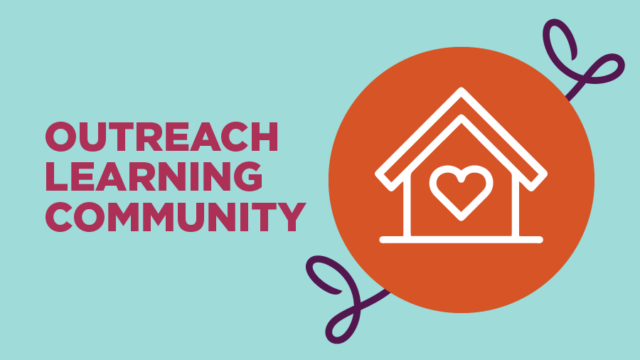Tip Sheet
Overcoming Barriers to Connecting with Kinship Families
Download This Resource



Key takeaways from the first of five sessions for social service professionals who want to improve outreach to kin caregivers
Expert: Gail Engel is a GRAND Voice caregiver advocate with Generations United who has reared her now 17-year-old grandson since infancy. She is the very active founder of the Grand Family Coalition, Inc., a Colorado nonprofit that provides services to and advocates for kinship families. Gail is also a member of the Grandfamilies & Kinship Support Network management committee and a subject matter expert for the Network.
Why This Topic Is Important: Connecting with grandfamilies and kinship families can be fraught with challenges. Mistrust, crowded schedules, logistical problems, stigma, social barriers, and privacy concerns may keep caregivers from seeking outside help. Many simply do not know about the services and programs available to them or that “kinship” applies to them. Having tips and ideas about where to start can help service professionals feel less daunted by this crucial task.
How to Connect with Kinship Families
- Promote your organization to stakeholders throughout the community.
- State and local government agencies, family courts, schools, and other service organizations may not be familiar with all your organization offers.
- Do not limit this outreach to family-oriented organizations; instead, look for those that address any of the interests and needs common to families: housing, law, health and nutrition, youth recreation, mental health, respite, libraries, child care, school liaisons, sports clubs, museums, etc.
- Show organizations what you can do for kinship families and explain that your services can help their clients and add value to their programs. Encourage them to refer caregivers to your organization and use “soft handoffs,” like email introductions, to connect families with all the supports they may need.
- Share newsletters, email blasts, and other communication with community stakeholders and ask them to share their events and project information with you. There may be synergy between your mission and theirs.
- Examples
- Colorado State Extension’s local farmers’ market provides a bag of fresh vegetables to adults age 65 and over. They allow Gail’s program to offer this to the kin caregivers they serve that are age 60 and over.
- The local Office on Aging partnered with Gail’s organization to provide $400 respite vouchers for kinship families.
- Examples
You need to let them know you’re here—this is what you do—and promote, promote, promote.
Gail Engel
- Re-examine how you connect with kin caregivers.
- How user-friendly is your program intake process?
- Can clients register or request services online? Can they access key information, like registration or service request forms, through social media?
- Are you able to respond to referrals or requests within 24 hours?
- Do you allot an hour (or more) for your initial conversation with a new client?
- If you need to refer the caregiver to another organization or professional, can you do a personal introduction? This approach reassures them that the next professional can be trusted.
- Remember that most caregivers want to address their immediate needs. Do not overwhelm them with things they do not need right away or at all. Help the caregiver determine their priority need(s).
- Listen first (with sympathy/empathy).
- Before detailing your services and procedures, give the caregiver your undivided attention. Give them space to tell their story and listen to identify needs that you may be able to address. If you have lived kinship family experience, share that with the caregiver to the degree that you are comfortable. It bolsters trust when they know you have walked in their shoes.
The relationship that you begin with them in that first phone call is what’s going to build their trust in you.
Gail Engel
- Start with the basics—grandfamilies and kin caregivers frequently seek help with addressing legal arrangements, enrolling children in school, accessing financial resources to support the child, finding affordable housing, and accessing respite services.
- Make it easier for caregivers to participate in peer support groups.
- If feasible, offer child care or schedule youth activities to coincide with caregiver support group sessions. This will give the children a chance to connect and give the caregivers some adults-only time. Ask the kin caregivers in your community what is most convenient for them. Evenings may work better for caregivers who work full-time, while others may prefer daytime meetings while children are in school.
- Consider Zoom or other virtual platforms for support groups. This can be a work-around for transportation, child care, or other hitches. It can also be a solution for far-flung clientele, such as those in rural areas.
- Encourage clients to make referrals.
- Encourage your clients to tell friends and family about your services. Remember that there is nothing like word-of-mouth recommendations from familiar and trusted sources. Provide clients with your business card and program flyer to share with others.
Other Thoughts
- Use newsletters, bulletins, and email blasts strategically.
- In her organization’s weekly newsletter, Gail keeps families informed about public benefit changes, legislative updates, and programs for children. She also likes to answer a question that she has heard or knows from experience that caregivers wrestle with.
- Include support group event notices in a timely manner. Give as much advance notice as possible, so caregivers can make arrangements to attend.
- Click here to read one of the Grand Family Coalition’s newsletters.
- Ensure inclusivity.
- Madisen, who works for a county kin caregiver program in San Diego, California, strongly suggests that organizations serving diverse communities provide multilingual communications and resources—or risk missing what can be significant groups of families who could benefit from support.
Resources
- Visit Gail Engel’s organizational website at https://grandfamilycoalition.org/ to see some of the work she and the Grand Family Coalition, Inc., are doing in Colorado.
- Visit the Grandfamilies & Kinship Support Network’s Resource Library at https://gksnetwork.org/resources/.


